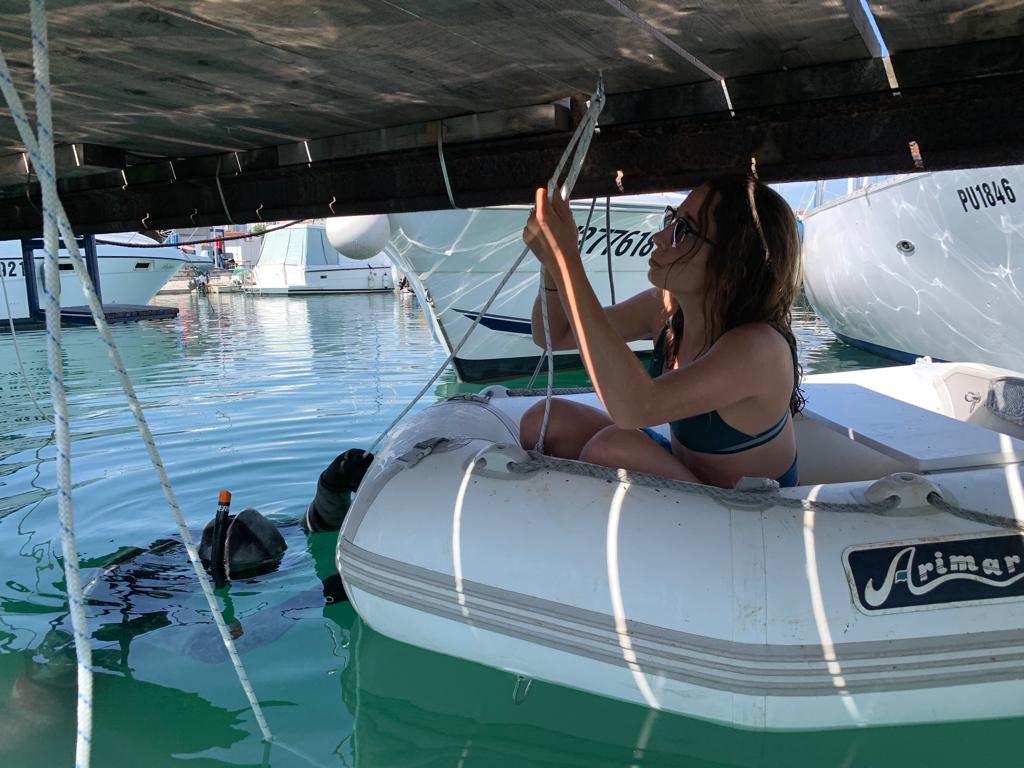By Vanessa Leininger
What comes to your mind when you think about light pollution? Maybe you have an image of the New York skyline in your head. However, what looks beautiful to humans can be a thread for other organisms that are also exposed to the artificial light at night (ALAN). Most people who think about the consequences of nighttime light would suggest that it influences insects, birds, and trees, but it can also reach coastal habitats including the sea surface, the water column and the seafloor. Hence, apart from other forms of pollution, light pollution is more and more recognized as a serious issue for the marine environment and is considered as potentially harmful for underwater ecosystems. Therefore, ALAN in marine systems is again the focus of this year’s GAME project. It investigates the influence of ALAN on the settlement behavior of sessile marine organisms.
After a one-year break, Croatia has joined the GAME programm again. „Team Croatia 2023“ consists of Vanessa from Germany, studying Biodiversity & Nature Conservation at the Philipps-University in Marburg, and Oliver, a Croatian Fisheries and Wildlife Management student from the University of Zagreb. As a German student, I wanted to participate in GAME mainly to work with and by the sea in a country with beautiful landscapes, like Croatia. Apart from that, collaborating with an international team fascinates me and could help me to extend my horizon. Oliver was asked if he wants to join GAME by his professor, because he is already experienced with marine fieldwork and he was looking forward to this unique experience. What makes Pula, the city in which GAME is based in Croatia, an interesting place to investigate the influence of ALAN is the fact that it is very obvious that artificial light plays a role here. At the marina, our research site, many bars are located that are meeting points for the people who live here. It is a vivid place that is illuminated by numerous street- and harbor lights, like it is the case at most esplanades along the Mediterranean coastline.
I arrived in Pula at the Morska Skola, a private marine research and education center, by the end of April and immediately got to know the team members and their valuable work. Their tasks are very diverse, ranging from plankton microscopy to snorkeling in caves, counting fish in bays and beyond. The concept of the Morska Skola is to spread enthusiasm for nature as this is the basis for its protection. Nobody wants to protect something that he or she does not know and love. For this reason, the team of the Morska Skola made it their mission to pass on their enthusiasm to others. With the marine biology courses they teach, they create an awareness of the beauty and the great ecological value of the Mediterranean Sea and the different environments it comprises. We both stay at the Morska Skola at the moment and when we do not work on our project, we cook and eat together with the team, play table tennis, or we are going on small adventures or concerts together. Some members of the team are a great help, since they support us in realizing our experiment. This is why we want to take the chance and mention them here. First and foremost, there is Gerwin Gretschel, our supervisor, who is a great help in planning the experiment and in finding the materials we need for constructing the setup. He will also support us with identifying the species that will colonize the settlement panels, which we will deploy in the sea. We will inspect the panels and identify the organisms on them every four weeks during the course of our experiment. Furthermore, without the Croatian founder of the school, Vlado, his car, and his equipment, it would have been impossible for us to transport the materials we needed for the set-up and to manage our activities. Two of the volunteers, Jakob and Mona, are also a great help. Jakob is quite experienced in any kind of craft and Mona gives us a hand whenever she can.
And of course, the surroundings could be worse ;)- Embedded in the green Istrian landscape is the clear blue sea, which makes us enjoy this experience.
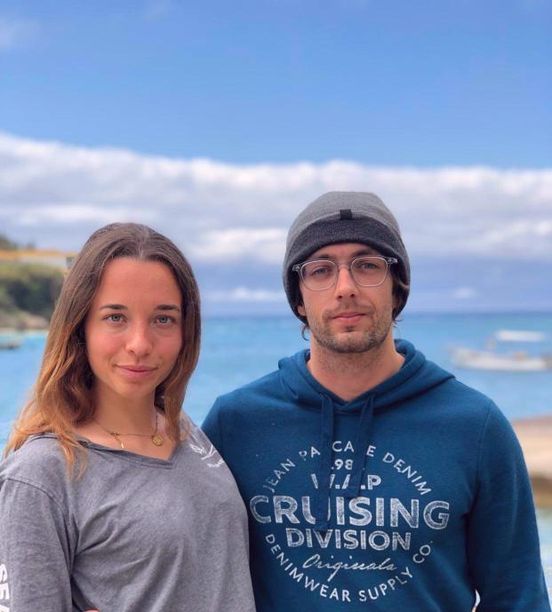
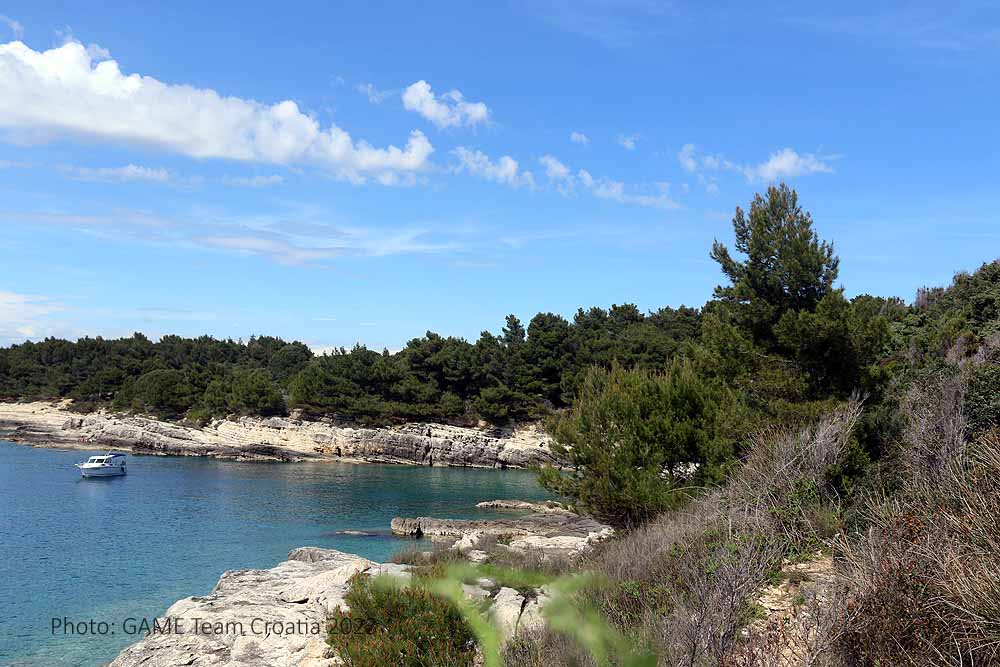
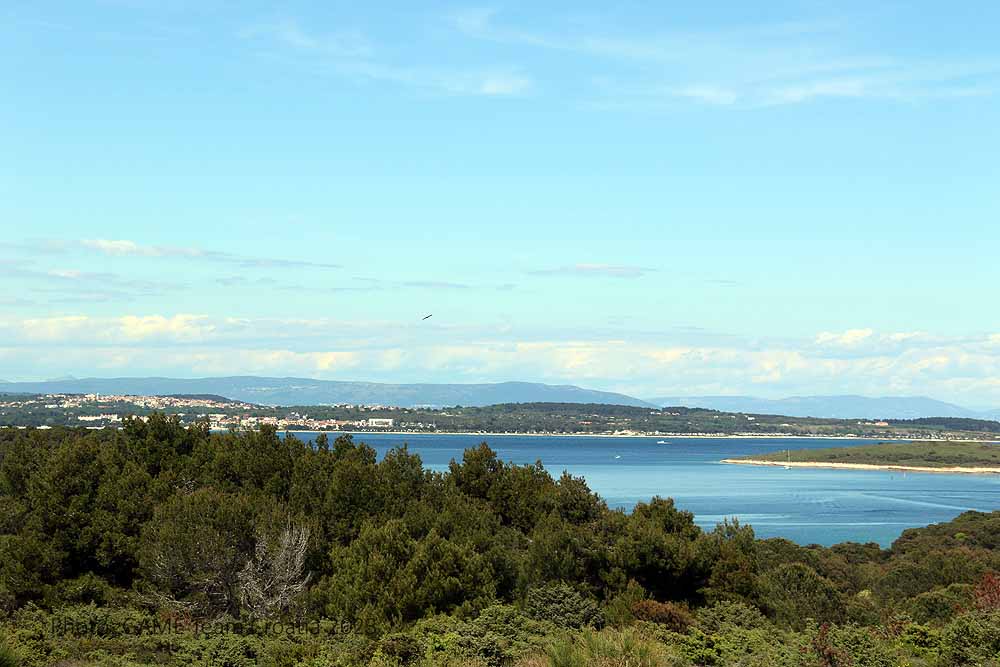
Apart from this, there are challenges that offer opportunities to grow. To implement the experiment in Pula is not easy, since the amount of equipment that is available at the Morska Skola is limited. Going to Bauhaus almost every day to buy everything that is needed, from the screws to the car battery, was new ground for me. As well as the craft and the construction work itself.
Oliver is a great help in carrying, for example, all the eight 30 kg weights, into the car and all the way from the car to the jetty. Together, we have now built four stable aluminium frames with nets around them. The nets protect the panels against predation by fish, and without them the panels would be empty before we can even recognize any settlement. On each frame there will be 15 PVC panels that belong to the “light exposure experiment” as well as additional recruitment panels. The latter will be investigated and replaced by empty panels every 3 weeks to see what larvae are present in the water column in a certain time period. The PVC panels are the main subject of the experiment or rather the marine organisms that will settle on them (hopefully). The tops of the frames are connected to a jetty, while weights that are attached to the bottom parts keep them stable through tides and storms. Two frames belong to each of us and allow us to investigate the effect of artificial light at night on the settlement behavior of larvae. For that, we are also going to install electric devices, such as a control unit for the LED system, underneath the jetty. They will be placed in a water-proofed box, and will be connected to the LED stripes to illuminate one of the two frames that are there per experimenter. The respective other frame is carrying the non-illuminated control panels. Oliver is investigating the effect of yellow LED light, whereas I am working with white light. In the end, we will compare our results to check whether a potential effect of ALAN on the colonization of the panels differs between white and yellow light sources.
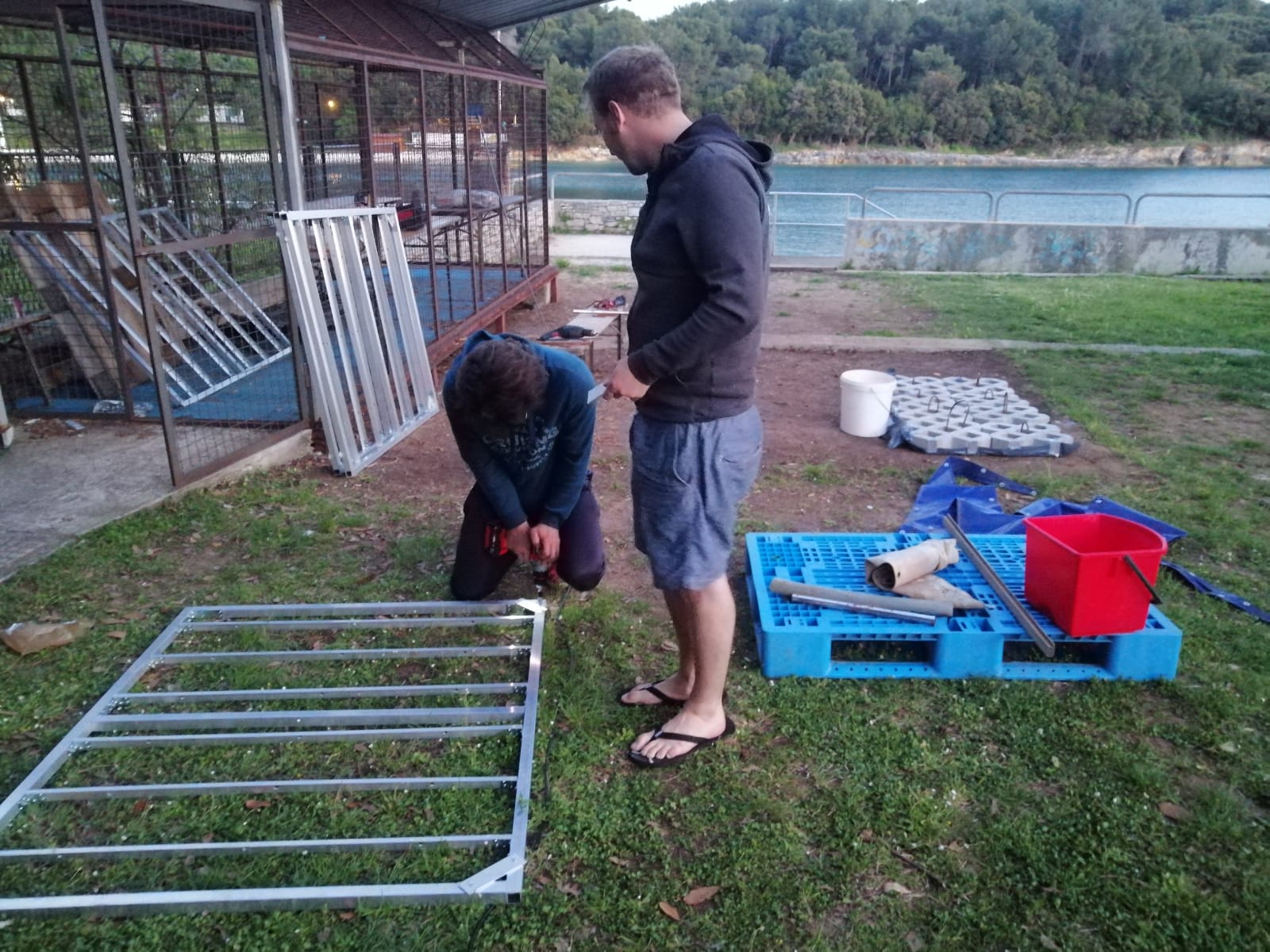
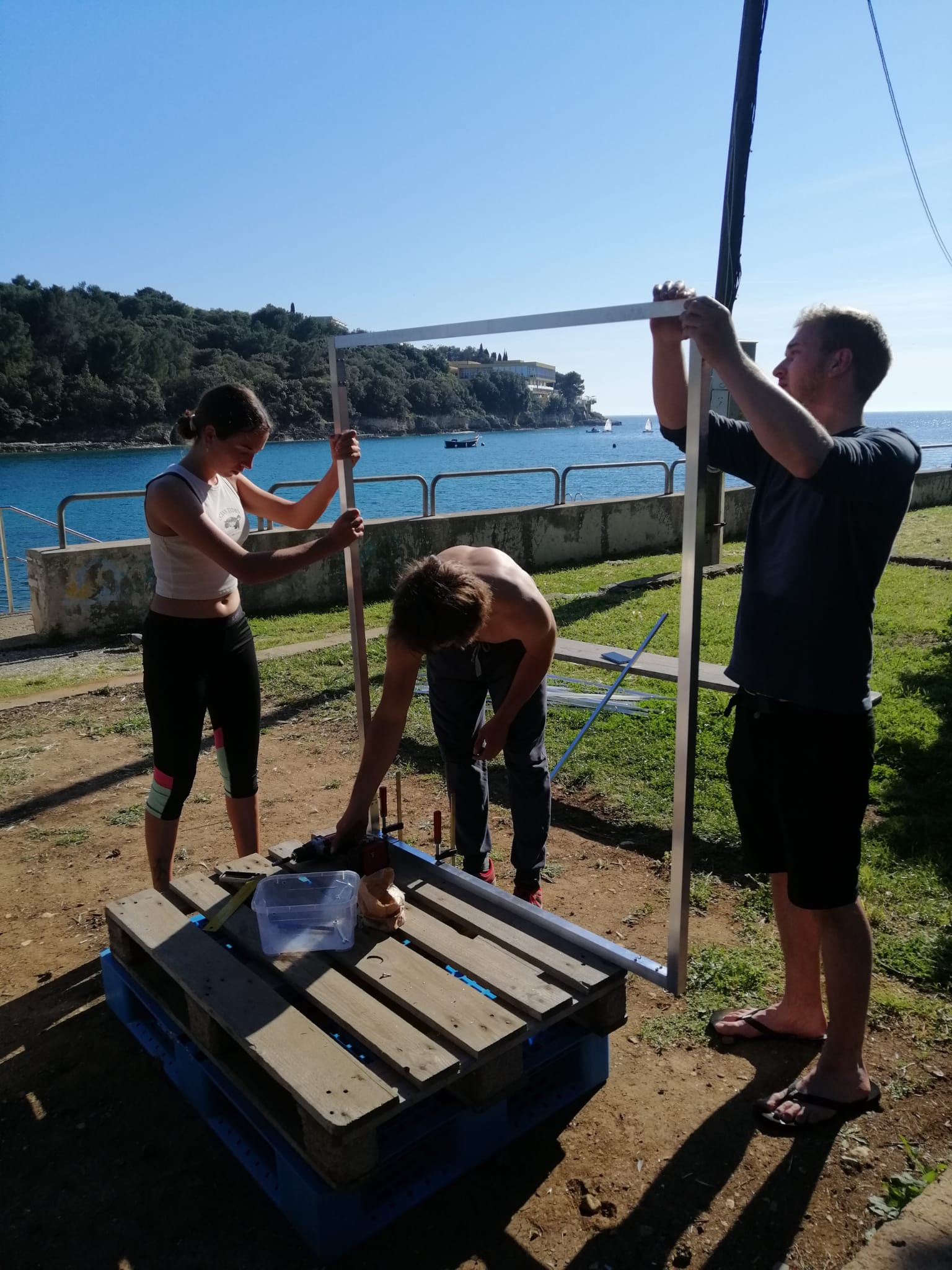
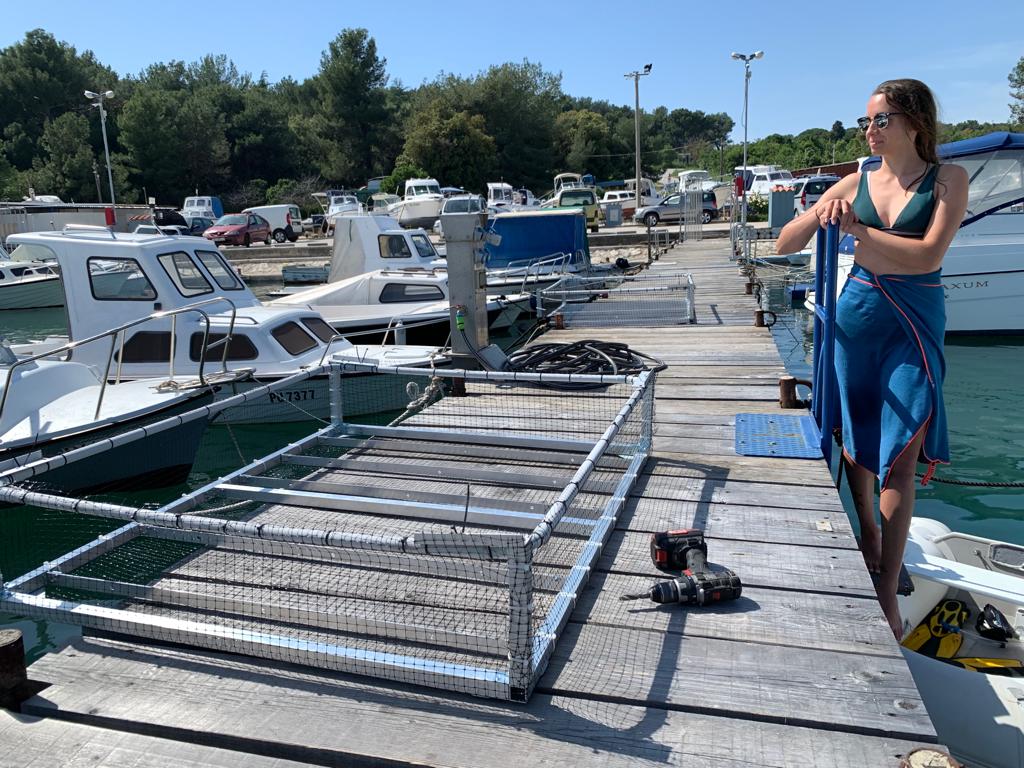
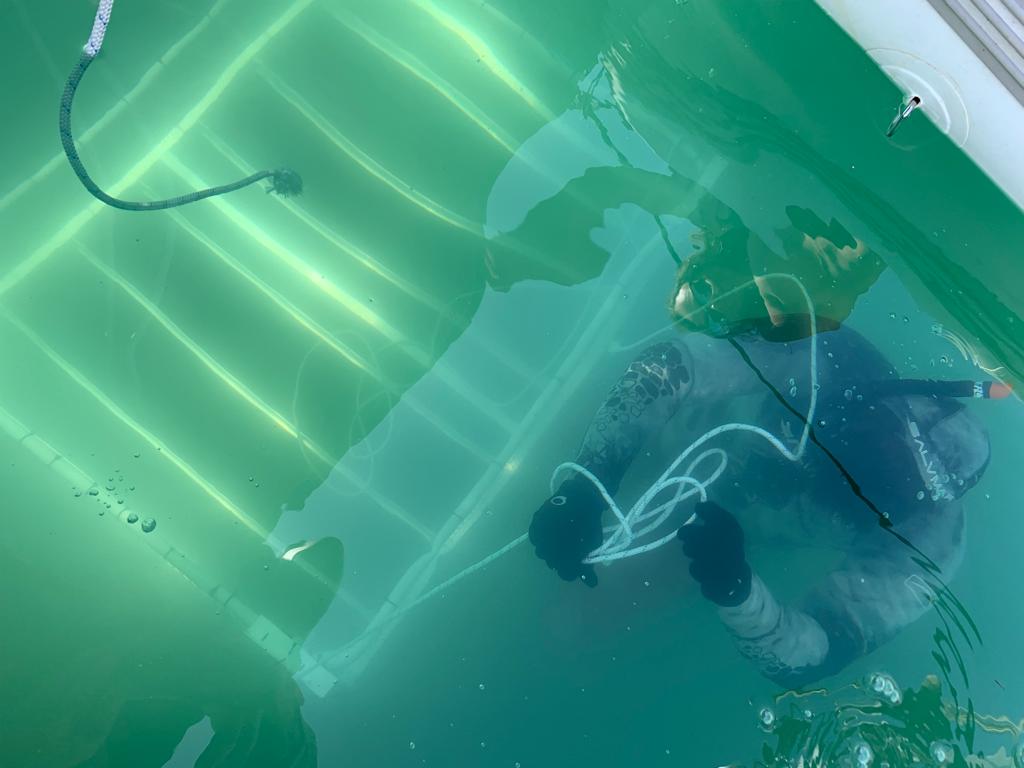
Soon the preparation phase will be over and the experiment can officially start. Four months of sun, diving, taxonomy of sessile organisms, fun, and research are ahead of us and we look forward to a functioning experimental setup (hopefully!) and a great time in Pula. We will keep you updated about the progress of “Team Croatia”. For further information, you can also follow GAME on Instagram (https://www.instagram.com/game_geomar/).
